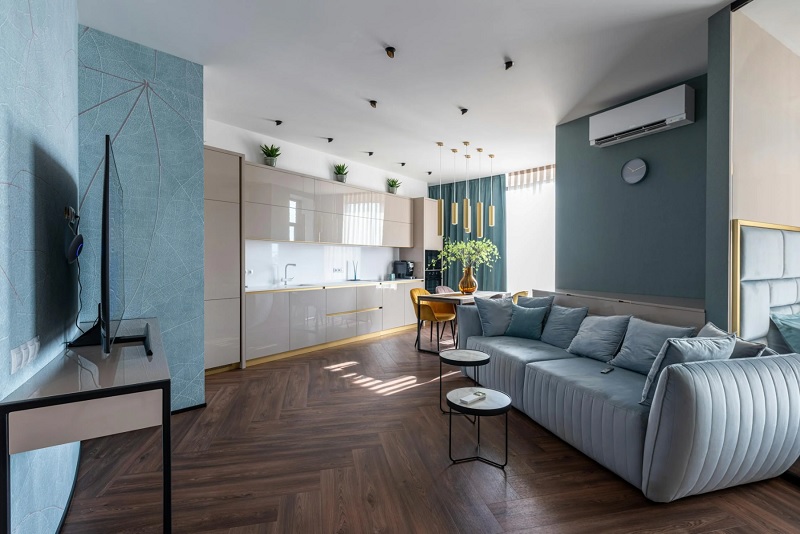Every house is different. Some have bedrooms that stay freezing while the kitchen feels like a sauna. Others have finished basements or bonus rooms that never seem comfortable, no matter how long the HVAC runs.
That’s why more and more homeowners are turning to three-zone ductless systems, better known as three-room mini splits. These setups connect three indoor air handlers to one outdoor unit, giving you control over separate parts of your home without the inefficiencies of ductwork.
But is a 3-zone system right for your house? Let’s explore how they work, what kind of home layouts they benefit most, and when they might make more sense than a traditional upgrade.
What Makes a 3 Room Mini Split Different?
A three-room mini split is part of the broader category of multi-zone ductless systems. It has one outdoor condenser and three wall-mounted indoor units. Each unit can be set to a different temperature or turned off when the room isn’t being used.
That kind of control is a big deal for homes that don’t always use every space. Why cool the guest room or dining area if nobody’s in there? This targeted approach makes cooling more efficient and more personal.
Who Should Consider a Three-Zone Setup?
You don’t need a giant house to benefit from this setup. In fact, some of the most common homes that go for a mini split with 3 heads are modest-sized single-family homes with layout quirks.
Think about homes with:
- Split-level designs — where upper and lower floors get drastically different temperatures
- Finished basements or attic spaces that central air struggles to reach
- Garage conversions or sunrooms that were added after the main HVAC system
- South-facing bedrooms that bake in the afternoon sun
- Older homes with no existing ductwork
Even newer homes can benefit if they have mixed-use zones that heat and cool differently. Instead of adjusting one central thermostat and hoping for the best, a mini split system lets you fine-tune comfort in each zone.
How a 3-Zone Setup Saves Money
Optimizing your cooling layout is not just about comfort. There’s also real money on the line.
Ducted systems lose up to 30% of conditioned air through leaks, especially if your ducts run through attics or crawlspaces. By contrast, ductless mini splits deliver air directly from the indoor unit to the room with no middleman.
When you use a multi room mini split setup, you also cut down on unnecessary cooling. You’re not paying to cool the whole house when you’re only using part of it.
And since modern systems come with high SEER2 ratings, inverter technology, and programmable settings, you can expect to cut monthly bills while increasing total control.
Real-World Examples of Great Layout Matches
Let’s take a look at how certain home layouts line up perfectly with 3-zone systems:
Split-Level Homes
Upstairs bedrooms usually get too warm, while lower levels stay cool. A mini split head upstairs, one downstairs, and one in the main living area gives you a better balance without rerouting ducts.
Finished Basement + Two Floors Above
You might put one head in the basement, one in the living room, and one in the master bedroom. That way, all your main areas get cooled without overspending on zones you don’t use all day.
One-Story with Large Footprint
Even on a single floor, heat zones vary. The kitchen, living room, and bedroom might all benefit from their own heads — especially if one room gets more sun than the others.
What About Central HVAC?
Central systems aren’t bad. For many homes with existing ductwork that’s in good shape, sticking with central HVAC makes sense. But for homes that weren’t designed with central air in mind or have hard-to-condition spaces, a mini split gives more flexibility.
A common mistake homeowners make is oversizing a central system just to make sure the hottest room stays cool. That leads to short cycling, uneven humidity, and poor energy performance. A better solution is to size each mini split with 3 heads appropriately for each zone and control them independently.
Noise, Appearance, and Control
Most people are surprised how quiet mini splits are. They don’t “kick on” like a window unit or rumble like some older central systems. Each air handler runs whisper-quiet, and the outdoor unit is often far less noticeable than a traditional AC compressor.
Appearance-wise, you’ll have wall-mounted heads inside unless you opt for ceiling cassettes or ducted concealed options. Controls can be basic remotes, wired thermostats, or smart app integrations depending on your system.
Do You Need All Three Zones Right Away?
Good news! You don’t have to use all three heads at once. Some systems let you install two now and leave one for later. That gives you room to grow or adjust the system if you remodel or finish another space down the road.
Just make sure your outdoor condenser is sized correctly for all three zones from the start.
Final Considerations
If your home has layout challenges, inconsistent comfort, or parts of the house that rarely get used, a three-zone mini split might be the most practical upgrade available.
You’ll gain zone control, better energy performance, and modern features without requiring invasive ductwork projects. And in the long run, that means a more efficient, quieter, and smarter way to manage comfort in your home.





